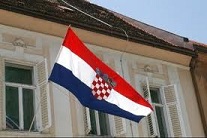The government of Croatia is formally known as the Government of the Republic of Croatia. It is split into two branches – the Executive branch and the Legislative branch. The President, Prime Minister and the cabinet, make up the executive element of the government in Croatia, whilst Parliament for the legislative branch.
The President of the government of Croatia is elected by popular vote. The current President for Croatia is Stjepan Mesic. The president serves a term of five years, which is restricted to only two terms in power.
The President holds supreme power over the government of Croatia. He is responsible for selecting both the Prime Minister (currently Ivo Sanader) and on his advice; the President is responsible for nominating the cabinet members to support him. In addition, the President of the government in Croatia is also supreme commander of the military and he has the right to veto any laws and to introduce new state laws.
In 1990, the Croatian parliament was changed from a tricameral entity to a bicameral entity. It is currently comprised of the Lower House (House of Representatives) and the Upper House (House of Districts). The government of Croatia is answerable to the Croatian parliament (the Sabor) and as such, it is necessary for the Sabor to sanction the government on appointment. As such, the Sabor are also responsible for countersigning the appointment of Prime Minister to government and the other supporting ministers.
The House of Representatives has more power than the House of Districts and as such, they are responsible for making decisions on all high level matters. The House of Districts maintain an advisory role – as opposed to a decision making role.
The judiciary is independent of the government of Croatia and judges are elected to fulfil life long positions.
The last set of government elections in Croatia were held in January 2005. As such, the next round of government elections in Croatia will be in January 2010.





